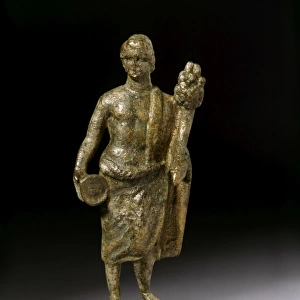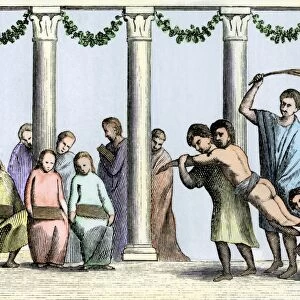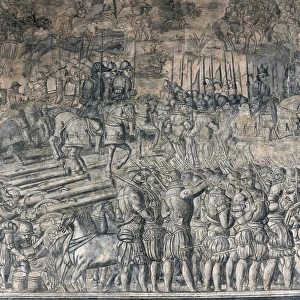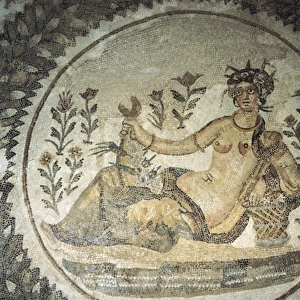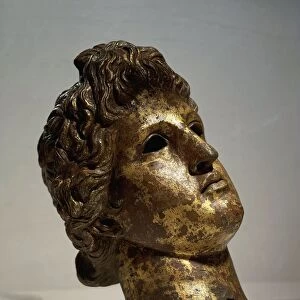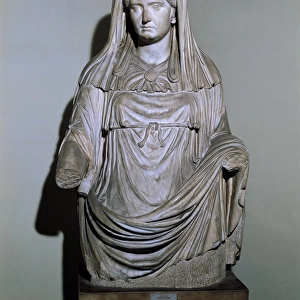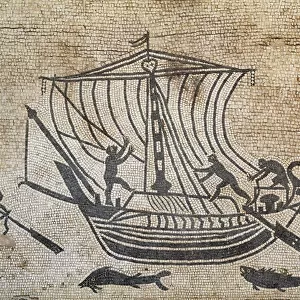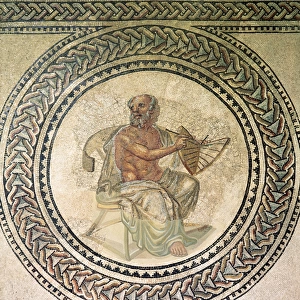Mosaic with hunting scene. 4th c. Roman art
![]()

Wall Art and Photo Gifts from Mary Evans Picture Library
Mosaic with hunting scene. 4th c. Roman art
Mosaic with hunting scene. 4th c. Roman art. Early Empire. Mosaic. SPAIN. Pamplona. Navarra Museum. Proc: SPAIN. Tudela
Mary Evans Picture Library makes available wonderful images created for people to enjoy over the centuries
Media ID 8282559
© Mary Evans/Iberfoto
Mosaic Navarra Pamplona Spaniard Europeans Masculine Persons Tudela
EDITORS COMMENTS
1. Title: "The Thrill of the Hunt: A 4th Century Roman Mosaic from Navarra Museum, Spain" This stunning 4th century Roman mosaic, discovered in Tudela, Spain, is a captivating testament to the rich cultural heritage of the Early Roman Empire. Hailing from the Navarra Museum in Pamplona, this masterpiece showcases the intricate artistry and craftsmanship that characterized the Roman world during this era. The mosaic, which dates back to the 4th century AD, depicts a lively hunting scene. At the center, a bearded Roman man, dressed in a tunic and cloak, stands tall and determined, his gaze fixed on a hare that he has cornered with the help of his hunting dogs. The man's masculine figure exudes strength and agility, reflecting the Roman ideal of the virile hunter. Surrounding the central figure, the mosaic is adorned with an array of vibrant colors, showcasing the richness and diversity of Roman art. The scene is filled with various animals, including hares, deer, and birds, all expertly rendered in exquisite detail. The mosaic's intricate design is further enhanced by the use of geometric patterns and intricate lines, which add depth and texture to the overall composition. This mosaic not only serves as a visual feast for the eyes but also offers a glimpse into the daily life and cultural practices of the Roman people during the Early Empire. The hunting scene is a common motif in Roman art, reflecting the importance of hunting as a pastime for the Roman elite and the role it played in their social and cultural identity. In summary, this 4th century Roman mosaic from the Navarra Museum in Pamplona, Spain, is a breathtaking work of art that showcases the intricate craftsmanship and rich cultural heritage of the Early Roman Empire. The lively hunting scene, rendered in vibrant colors and intricate detail, offers a glimpse into the daily life and cultural practices of the Roman people during this era.
MADE IN THE USA
Safe Shipping with 30 Day Money Back Guarantee
FREE PERSONALISATION*
We are proud to offer a range of customisation features including Personalised Captions, Color Filters and Picture Zoom Tools
SECURE PAYMENTS
We happily accept a wide range of payment options so you can pay for the things you need in the way that is most convenient for you
* Options may vary by product and licensing agreement. Zoomed Pictures can be adjusted in the Cart.


